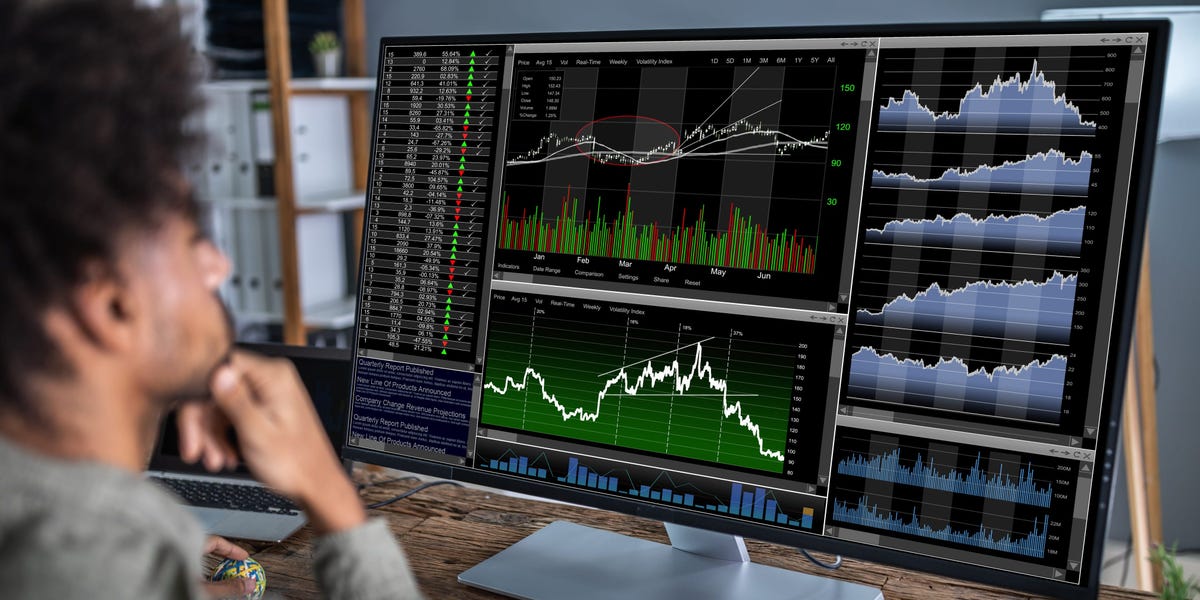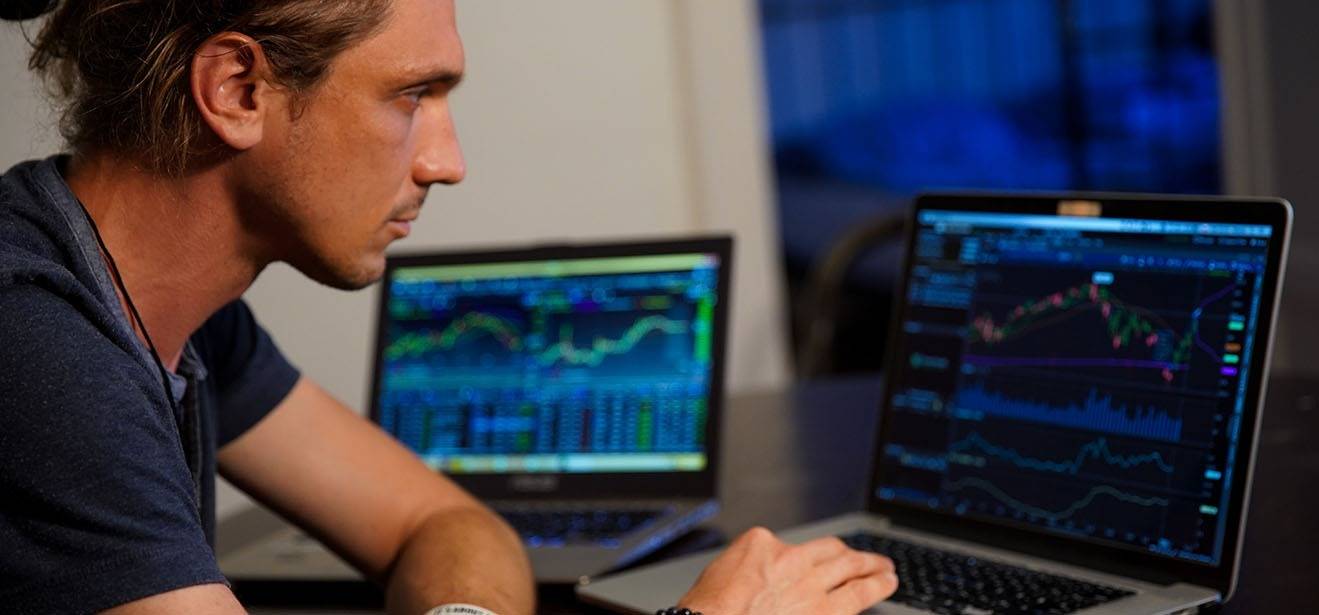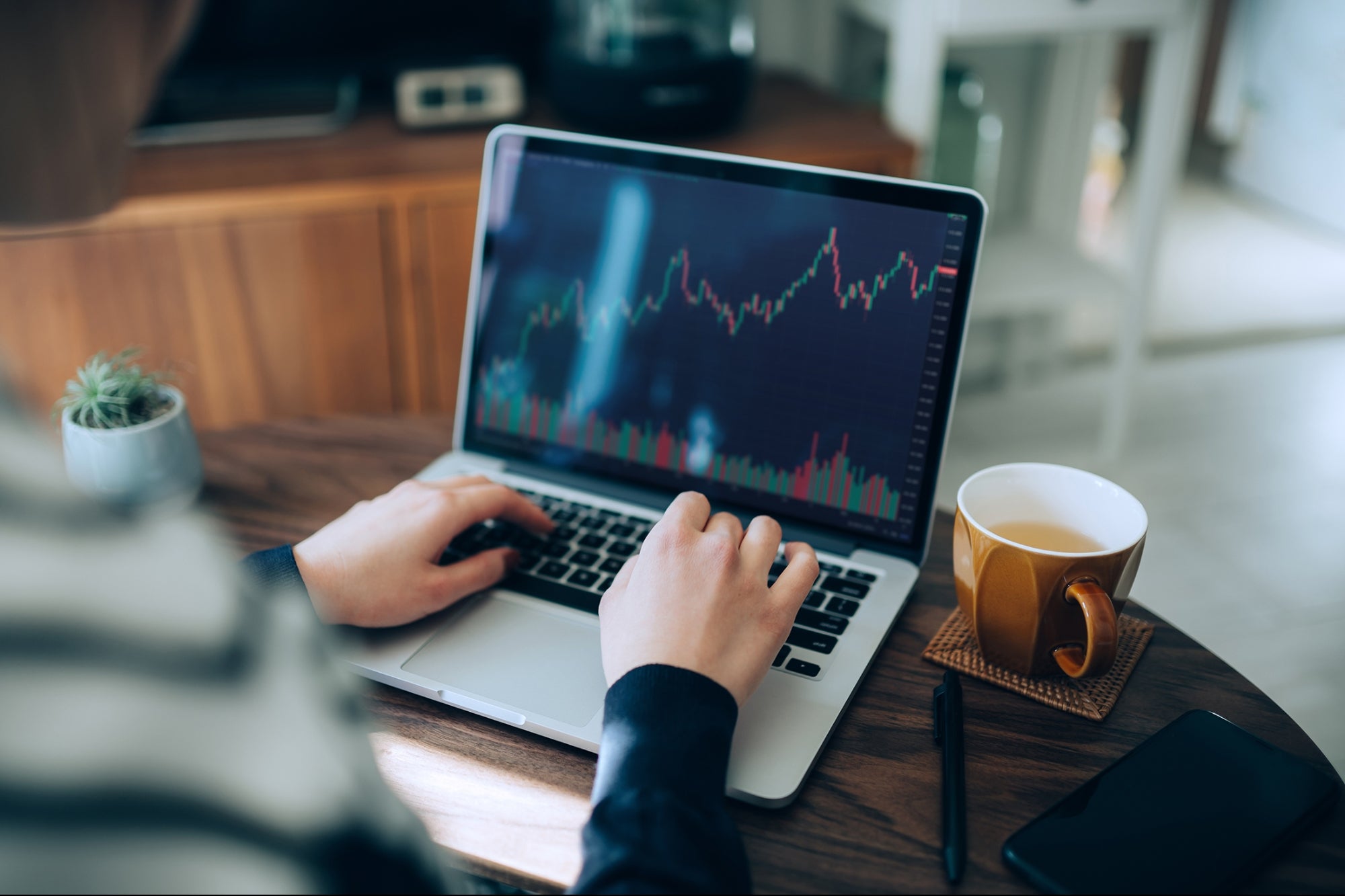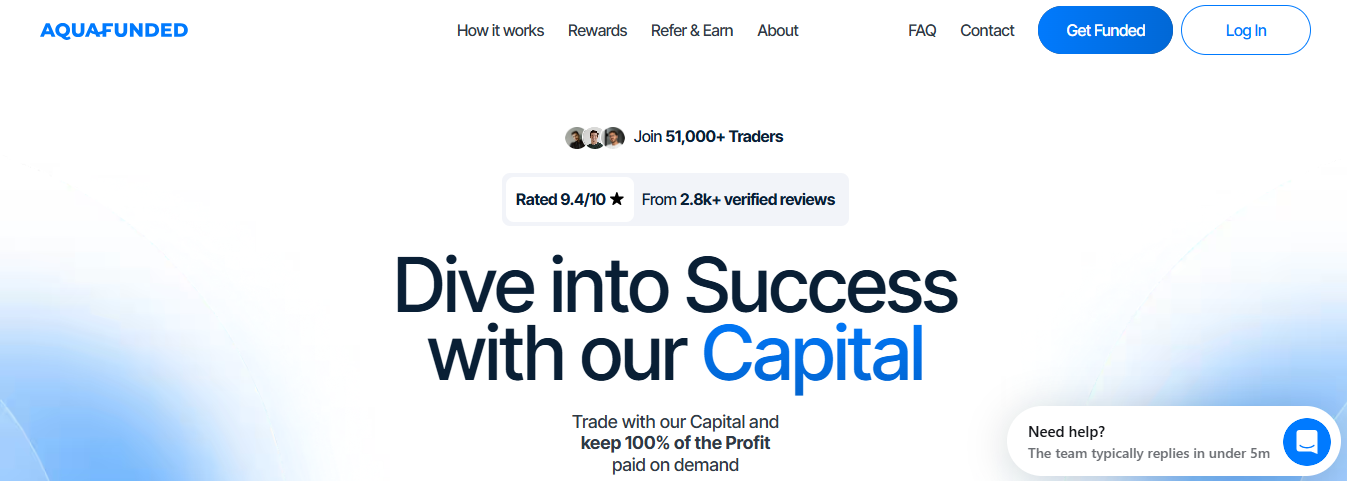4 Strategies for Trading the DAX
Discover 4 proven strategies for Trading the DAX effectively—boost precision, manage risk, and make smarter market moves today.

Trading the DAX tests you every morning as Frankfurt opens and volatility hits DAX futures tied to German blue chips. Within day trading indices, the DAX rewards quick, disciplined traders who master intraday strategies, session overlap moves, order flow, and support and resistance around the market open and economic calendar events.
Want to tighten your entries, control leverage, and align your plan with spread, tick size, contract size, and trading hours? This guide provides clear strategies for chart setups, technical analysis, reading momentum and fundamentals, and risk management, enabling you to trade the index with confidence.
To help you get there, AquaFunded's Funded Trading Program gives traders access to capital, a straightforward evaluation, and coaching under real market conditions so you can focus on honing entries and protecting capital while pursuing pro trading with a funded account.
Summary
- The DAX is a concentrated blue-chip index comprising 40 constituents that collectively represent approximately 80% of the market capitalization traded on the Frankfurt Exchange, with the index standing at 23,081.03 as of March 5, 2025.
- Practical intraday systems exhibit precise, measurable edges. For example, a 15-minute RSI momentum approach recorded a 75% win rate over the past year, while disciplined opening-range breakout variants averaged roughly a 12% annual return in multi-year testing.
- Leverage is a double-edged sword, so convert platform rules into hard limits such as capping per-trade risk at 0.5-1.0% of equity and enforcing daily and weekly loss stops to prevent rapid account ruin.
- Analytics and repeatable measures matter more than memorizing syntax, as the DAX function library exceeds 250 functions, with over 50% geared toward data analysis, which supports the building of auditable trading metrics.
- Index governance shifted toward diversification with the expansion of the DAX from 30 to 40 constituents in 2021, a move intended to reduce single-stock concentration and broaden sector coverage.
- Operational hygiene and cadence reduce behavioral risk, for instance, by restricting specific signal systems to one trade per day and requiring three consecutive months of low volatility before scaling notional size.
- The Funded Trading Program addresses this by providing access to external capital, a clear evaluation path, and coaching under live-market conditions, allowing traders to focus on disciplined entries and risk controls.
What is the DAX

The DAX is Germany’s blue-chip stock index, built to track the performance of the country’s largest, most actively traded companies listed on the Frankfurt exchange, and it functions as a practical barometer of German economic strength in global markets. Below, I break down the essential facts you need to trade or analyze this index, each point reworded and expanded so you can act on it.
1. Composition and scope
The index comprises 40 major, highly liquid German firms that trade on the Frankfurt Stock Exchange, selected because they significantly influence market movements and are easily bought or sold in large quantities. These members are multinational companies whose results ripple through exports, supply chains, and global investor sentiment.
2. How weightings are calculated
DAX weightings use a free-float approach, so a company’s index weight reflects only the shares readily available to public investors, not strategic holdings. The calculation also takes into account the average trading volume to keep the index responsive to the actual transactions of traders.
3. Historical origin and base level
The DAX was launched in 1988 with a baseline index value of 1,163 points, a straightforward starting point that allows us to compare decades of performance consistently.
4. Market-cap coverage
Member companies together account for about 80 percent of the total market capitalization that trades on the Frankfurt Exchange, which means the index captures the lion’s share of Germany’s listed corporate value and is therefore an accurate concentration of national market power.
5. Expansion from 30 to 40 constituents
For most of its history, the index comprised 30 firms; regulators expanded it to 40 in 2021 to broaden sector representation and reduce single-stock concentration, thereby altering how portfolio managers and traders approach diversification in German equities.
6. Why traders treat the DAX as an economic gauge
Analysts and traders use the DAX as a shorthand for Germany’s economic pulse because the index is dominated by export-oriented industrials, financials, and consumer firms; sharp moves in the DAX often precede shifts in currency flows, bond spreads, and regional risk appetite.
7. Representative companies and what they do
Adidas AG, a global sportswear manufacturer and retailer, influences consumer sentiment in discretionary spending. Allianz SE provides insurance and asset management services worldwide. Bayer AG, with roots in pharmaceuticals and consumer health products, exposes the index to life sciences and regulatory cycles. Each example illustrates how various sectors contribute to the index’s behavior.
8. Where prices come from and how the index updates
The DAX’s price inputs come from Xetra, the electronic trading platform that supplies continuous quotes. Those feeds, combined with the free-float and volume adjustments, create the index level that traders see quoted across platforms.
9. Recent index level context
The weekly value of the DAX index amounted to 23,081.03 as of March 5, 2025. This snapshot helps you calibrate risk and position sizing against an absolute market reference.
10. A naming collision to watch for
Don’t confuse the stock index with the similarly named analytics language; the Power BI resource titled '14,204 words' is about data formulas, not German equities, and mixing the two can waste time when researching strategies or data sources.
Most traders handle research, execution, and post-trade review with a patchwork of terminals, news feeds, and spreadsheets, because those tools are familiar and quick to set up. As positions scale or intraday timing matters, that approach fragments information, increases execution slippage, and makes it harder to reconcile positions across venues. Platforms like AquaFunded centralize real-time quotes, pre-trade analytics, and order routing, ensuring that decision-to-execution workflows remain tight. This reduces manual reconciliation and the risk of a missed signal becoming a costly mistake.
Which would you prefer for the two short, website-grounded sentences I need to produce next: A, paste your client name plus 2–3 lines of website messaging so I can write exactly to that voice, or B, let me assume a plausible retail DAX trading platform positioning focused on speed, and I’ll draft the copy immediately?
This description seems straightforward, but the objective complexity that follows will force you to rethink how the DAX’s parts behave when markets are moving fast and liquidity matters.
Types of DAX Functions

DAX organizes its tools by what you need to build: summaries, logic, time-aware measures, text handling, row-level selection, and advanced statistics. Mastering each type lets you translate trading questions into repeatable signals and stress-tested metrics for Trading the DAX.
Microsoft Learn, 2023, catalogs More than 250 DAX functions, which explains why choosing the right family matters more than memorizing every formula. The same reference (2023) also highlights that over 50% of DAX functions are used for data analysis, showing the language is optimized for analytic work rather than general programming.
1. Aggregation Functions
Aggregations compress rows into a single number that you can act on, such as totals, averages, counts, or the smallest and largest values. Use SUM, AVERAGE, COUNT, MIN, and MAX to turn tick-level or minute bars into position-size rules, realized PnL snapshots, or session-level volume measures. In practice, build a clean aggregation first, then layer time filters on top so your moving windows and intraday summaries remain stable under refresh.
2. Logical Functions
Logical tools let you gate behavior with conditions, branching calculations where a single formula must handle multiple states. IF, AND, OR, and NOT create trade rules such as entry_allowed when volatility is below a threshold, or reward_to_risk classifications that change sizing. Write these as small, testable expressions, because complex nested logic is where signals quietly diverge from intuition during live runs.
3. Date and Time Intelligence Functions
These functions manipulate calendars and cumulative windows, utilizing DATE, YEAR, MONTH, NOW, TOTALYTD, TOTALMTD, and TOTALQTD as building blocks. Traders use them to compute running returns, session-to-date exposures, and quarter-to-quarter comparisons that align with corporate reporting. When market gaps or holidays shift, rely on DAX time intelligence to normalize comparisons rather than manually slicing the data, which creates brittle metrics.
4. Text Functions
Text functions handle labels, instrument identifiers, or transformed categorical rules, using functions such as CONCATENATE, LEFT, RIGHT, and SEARCH to parse or build strings. In a trading context, these help you standardize symbol names, extract exchange prefixes, or generate human-readable trade notes. Keep text work to a minimum in high-frequency measures, as string operations can mask performance problems and make validation tedious.
5. Filter Functions
Filters pick the rows that feed calculations, using FILTER, ALL, and RELATED to craft the lens through which an aggregation runs. Use FILTER to implement intraday session rules, ALL to remove slicer context for reference baselines, and RELATED to join dimensions like instrument metadata. This is the area where most mistakes hide: wrongly scoped filters produce averages that look sensible but fail when you backtest across regimes. The typical pattern is clear: platforms update, and suddenly saved measures break or require retyping, which is exhausting and slows adaptation when you need to iterate fast.
Most traders assemble measures in spreadsheets or ad hoc dashboards because that feels fast and familiar. That works until a platform update or a team handoff erases context, fragments logic across files, and forces re-creation of critical metrics. Teams find that platforms such as AquaFunded centralize measures, preserve versioned DAX libraries, and automate refreshes, cutting the time lost to brittle, manual maintenance while keeping formulas auditable.
6. Statistical Functions
Statistical functions provide dispersion and variability measures, such as STDEV, VAR, and MULTIVAR, which you use to quantify volatility, estimate parameter uncertainty, and stress-test signal robustness. Pair these with rolling windows and filter functions to produce realized volatility, correlation matrices across instruments, and Monte-Carlo-ready inputs. Treat statistical outputs as probability statements, not certainties, and instrument guardrails that change with regime shifts rather than fixed thresholds.
When you combine these six families, you stop building isolated calculations and start creating a small, maintainable language for trading insight that other people can read, test, and improve.
What comes next reveals the hidden costs and surprising payoffs when those functions meet real market risk.
Related Reading
- What Is Considered a High VIX
- What Is a Trading Session
- What Is Support and Resistance in Trading
- What Is a Stock Market Index
- How to Trade S&P 500 Futures
- How Is the Dow Jones Calculated
- CFD Indices
- Asset Class Correlation
Benefits and Risks of DAX

Trading DAX futures gives you clear advantages, but only when you pair them with strict sizing and disciplined risk control; the upside is real, and so is the downside. Below, I list the principal benefits and the corresponding hazards, each accompanied by practical details that you can act on.
1. Diversification and continental exposure
Benefit
You gain access to Germany’s major exporters and industrial leaders without buying individual stocks, which spreads market-specific risk across multiple sectors and helps hedge portfolios that are heavy in U.S. equities. Think of it as a single instrument that adjusts your geographic beta, making it useful when you want to change exposure quickly.
Practical detail
Use position size rules tied to portfolio volatility rather than fixed share counts, so the DAX position actually changes your risk profile instead of merely adding nominal exposure.
2. Leverage that magnifies capital efficiency
Benefit
Futures let you control a considerable notional value while posting a fraction in margin, freeing capital for other trades or strategies. That leverage accelerates the return on invested capital when your edge is effective.
Practical detail
Treat margin as a working capital tool, and set per-trade limits as a percentage of usable buying power; this prevents one margin call from wiping out diversified positions.
3. Tight liquidity and efficient execution
Benefit
The DAX futures market is deep, which typically means tighter spreads and the ability to scale entries and exits with less slippage compared to thin single-stock names. For intraday traders, that liquidity supports rapid position changes around macro events.
Practical detail
Use volume-weighted limit orders during high-liquidity windows and avoid market orders when major European data releases are pending, because even liquid books thin at the worst moments.
4. Symmetrical opportunity in rising and falling markets
Benefit
Futures let you go long or short with equal facility so that you can express a directional view regardless of macro direction. That flexibility is essential when you expect rate shocks, currency moves, or sector-specific rotations to push European indices one way or the other.
Practical detail
Keep separate playbooks for long and short regimes, including distinct stop rules and time-in-market limits, since each side behaves differently across news cycles.
5. Leverage-related loss amplification
Risk
Leverage cuts both ways, meaning small adverse moves can produce outsized losses quickly if position sizing is loose. This is the single most significant technical cause of account failure.
Actionable control
Cap risk per trade to a fixed fraction of account equity, and enforce daily and weekly loss limits that automatically suspend risk-taking when hit.
6. Volatility and sudden regime shifts
Risk
The DAX can gap or move sharply in response to geopolitical events, corporate surprises, or coordinated central bank actions, producing moves that invalidate intraday patterns.
Pattern-based insight
This challenge appears across retail and prop setups: strategies that work in calm windows fail when correlations spike and liquidity withdraws. Design your alpha to degrade gracefully and test it across high-volatility samples.
7. Sensitivity to macro and political catalysts
Risk
Economic releases, elections, and trade developments can cause the index to fluctuate more rapidly than technical models anticipate, and these fluctuations often ripple across multiple sectors.
Practical detail
Maintain an economic calendar with impact tags and reduce intraday exposure into high-impact events, or trade smaller notional sizes with wider stops during these windows.
8. Operational and behavioral risk, not just market risk
Risk
Poor record-keeping, inconsistent rules, and emotional responses to drawdowns amplify losses more reliably than market moves do. Traders frequently break rules under stress, and that is what converts a minor setback into a ruinous one.
Pattern-based approach
If you lack automated sizing, the likelihood of rule-bending increases; implement forced guardrails, such as hard stop orders or platform-level risk controls, to remove temptation when a losing streak narrows your focus.
Data and analytics strengthen every item above, because faster insight reduces execution friction and decision lag. Companies using DAX have seen a 30% reduction in data processing time, according to Beyond Power BI: Why DAX Skills Are More Valuable Than Ever in 2025. That capacity to process signals quickly is crucial in markets where a single macroeconomic surprise can reset risk pricing. Likewise, 80% of business analysts reported increased efficiency after mastering DAX, according to Beyond Power BI: Why DAX Skills Are More Valuable Than Ever in 2025, so investing in concise, repeatable analytics pipelines gives you a practical edge in monitoring exposures and slippage.
Most traders build rules in spreadsheets because it feels fast and familiar, which works at a small scale. But as position size or trade frequency rises, fragmented files and manual checks create blind spots, execution delays, and reconciliation errors. Platforms like Funded Trading Program centralize positions, automate risk rules, and preserve audit trails, thereby compressing the hidden costs of manual workflows while maintaining transparent control.
A few practical guardrails I rely on when trading DAX futures: enforce fixed percentage risk per trade, treat margin as working capital rather than available profit, pre-define responses to macro events, and build automated reconciliation so PnL and margin reflect reality at all times. These tradecraft changes are small, but they change failure modes as scale increases and volatility returns.
Turn your trading skills into substantial profits without risking your own capital with AquaFunded’s funded trading program, where traders access accounts up to $400K under flexible conditions, no time limits, easy-to-achieve profit targets, and up to 100% profit split. Join over 42,000 traders worldwide who have collected more than $2.9 million in rewards, backed by a 48-hour payment guarantee; start immediately with instant funding or prove your edge through customizable challenges.
That advantage feels final until you discover the one constraint that can quietly undo it all.
Related Reading
- Where to Place Stop Loss
- Position Size Formula
- Scalping vs Day Trading
- What Is Index Pricing
- Volatility Indicator MT4
- What Are the Advantages of CFD Trading Over Normal Trading
- How to Profit From CFD Trading
- What Is a Fair Value Gap in Trading
- How to Calculate Stock Volatility
- Difference Between Nasdaq and S&P
- FTSE vs MSCI
4 Strategies for Trading the DAX

You trade DAX futures by pairing funded capital with simple, repeatable entries and strict risk rules, then letting position size and cadence protect your edge. Below, I give four practical items you can act on immediately, each rewritten for clarity, discipline, and live-trade reliability.
1. AquaFunded: practical steps to trade with outside capital
Practical checklist for getting funded, staying compliant, and scaling responsibly.
Apply and prove
Choose the customizable challenge path or instant funding option that matches your time horizon and tick frequency, then treat the evaluation like a live demo account, following every rule precisely to avoid disqualification.
Risk rules and sizing
Convert platform rules into hard trade limits on your platform, for example, cap risk per trade at 0.5–1.0 percent of the funded balance and enforce daily and weekly loss stops with automatic halts.
Payout and scaling workflow
Track payouts and withdrawals as separate line items in your ledger to prevent growth from tempting size creep. Plan a tiered scaling approach so you only increase notional value after three consecutive low-volatility months.
Operational hygiene
Keep order templates, saved chart layouts, and recorded session notes so you can demonstrate rule compliance during review; this reduces disputes and speeds up payout verification.
2. 15-minute RSI momentum entry, rewritten for robustness
Why use this setup, and how to reduce false signals.
Setup
15-minute bars, RSI 14, extended thresholds at 75 for overbought and 25 for oversold. Mark the signal candle’s high and low for immediate execution references.
Entry mechanics
When a 15-minute candle closes with RSI above 75, place a buy stop at that candle’s high; when RSI closes under 25, put a sell stop at that candle’s low. Use the breakout candle’s opposite extreme as an initial stop.
Position math
Risk X points per trade, target 3X for a 3:1 reward-to-risk, size to keep X at your fixed percent of equity. Never stack multiple same-direction entries in the same session.
Failure modes and fixes
Ignore RSI crosses that are not price-confirmed; if price stalls inside the candle range for two bars, cancel the order. This reduces whipsaw losses.
Live-trade discipline
Take no more than one trade per day from this system and avoid trading during scheduled high-impact news events. That cadence prevents overtrading and rule erosion.
Edge note
A similar multiday reversal approach has shown surprisingly high consistency, with the first strategy achieving a 75% win rate over the past year according to Unger Academy, which underscores why strict confirmation and tight stops matter.
3) Two-hour opening range breakout, refined for execution
A concise plan for the opening two hours that prioritizes volume and controlled targets.
Setup
Mark the high and low of the first two hours of trade; set alerts at those levels and monitor real-time volume relative to recent session averages.
Confirmation and entry
Enter long when price breaks above the range with above-average volume, short when it breaks below with above-average volume. Place the stop at the breakout candle’s low for longs, or high for shorts.
Targets and trade management
Aim for a fixed 10- to 15-point first target, but remain willing to hold until the final hour if momentum remains strong and volume sustains. Use a trailing stop to protect extended winners.
When to stand aside
Avoid breakouts that occur on thin volume or within narrow overnight ranges, as these have a high failure probability.
Performance context
Over multi-year testing, disciplined breakout variants produced steady returns; the second strategy recorded an average annual return of 12% over the last five years, according to [Unger Academy, but realize that returns depend on slippage, fees, and execution quality.
Status quo disruption, applied to funded trading workflows
Most traders keep order templates and risk checks in spreadsheets because that feels quick and familiar. That works until the manual copy-paste errors, stale templates, and inconsistent stops turn a single slip into a funded-account breach. Solutions like AquaFunded centralize rules, preserve versioned templates, and automate simple checks, allowing traders to maintain compliance without interrupting execution or sacrificing speed.
4. Previous day high/low breakout on the 30-minute chart
A conservative breakout that favors confirmed closes and trend alignment.
Setup
Use 30-minute bars, draw horizontal lines at the prior day’s high and previous day’s low, and add a simple moving average filter to prefer trades in the day’s direction.
Entry rules
Enter long only after a 30-minute candle closes above the previous day’s high, enter short after a 30-minute candle closes below the previous day’s low. Put the stop below the breakout candle’s low for longs and above the breakout candle’s high for shorts.
Filters to reduce fakeouts
Require a retest or supporting volume spike, and prefer entries when the price is on the same side of a 20-period SMA to tilt the odds in your favor.
Profit management
Use a two-step exit, take partial profits at an initial target, then run a trailing stop on the remainder. This balances a stable cashing-out rule with the chance for larger moves.
Practical risk and realism measures you must adopt now
Pattern recognition
Backtests that omit fees, spreads, and taxes routinely overstate live performance, and that is the single most common reason disciplined traders feel blindsided when moving to real capital. Insist that every backtest includes realistic commissions, two-way slippage, and occasional failed-fill scenarios, then re-run with reduced edge to set durable expectations. Also, plan for periods when a working setup will stop working, then rotate to a different rule set rather than doubling down.
A quick operational routine to lower behavioral risk
Pre-session checklist
Confirm daily loss limit, check the economic calendar for high-impact events, and verify your platform’s order templates match your stop and target sizes.
Post-session habit
Record each trade with time, rationale, and deviation from the rule; after five trades, review for pattern drift and abort the system if laws were broken more than once.
Want to see how tight rules, funded capital, and disciplined trade rotation look when combined at scale?
Join Our Funded Trading Program Today - Trade with our Capital and Keep up to 100% of the Profit.

If you want to scale your DAX day trading without adding operational friction, consider AquaFunded as a practical next step; I recommend testing funded indices strategies with tight risk controls and clear execution rules. You can lower the cost to get started through 30% OFF for New Customers, or, if you already trade with the program, use trial-funded accounts with less upfront commitment.
Related Reading
- CFD Leverage
- Breakout Trading Strategy
- Gap Fill Strategy
- NFP Trading
- Swing Trading Patterns
- Dow Jones Index vs S&P 500
- FTSE 100 vs S&P 500
- CFD Market Hours
- Spot Trading vs Futures Trading


